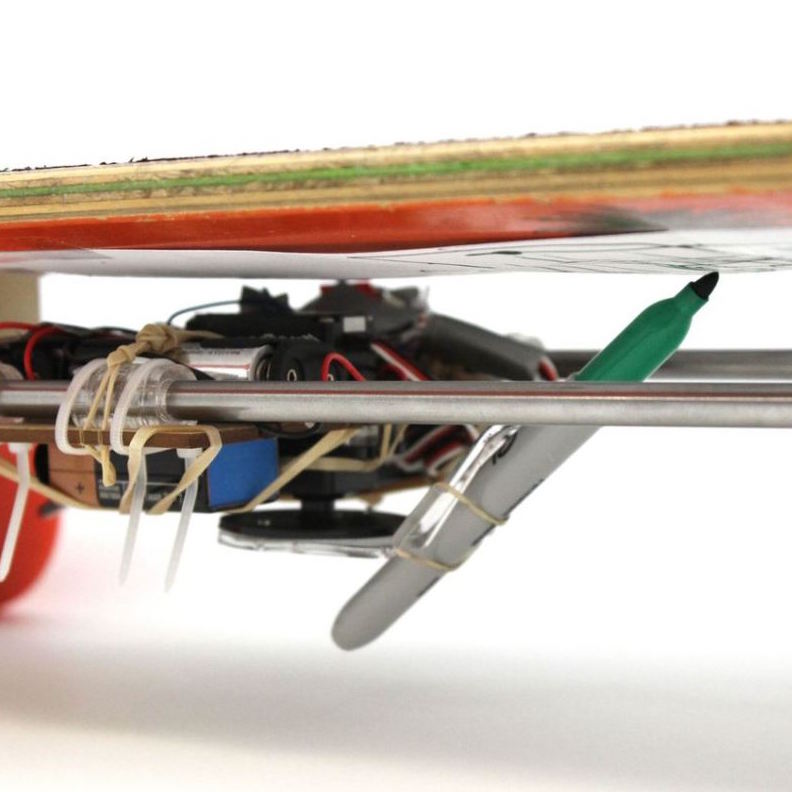SketchBoard

source code - video - instructable
A longboard that draws on its underside using an XY-plotter based on your travels.
This group project was created as part of the Critical Making course at UC Berkeley. We were tasked with transforming a mode of transportation. We found that people were very interested in picking up the longboard and tilting it to create art (most people didn’t know how to ride one, so we didn’t get many people using it for its intended purpose). Thoughts I have relating to this project:
- The low fidelity of the drawings, and the lack of fine-grained control over what was created seemed freeing. The Sketchboard has its own style, and people accepted it as it was.
- There was some interest in being able to flexibly capture different types of movement (speed, rate of turn, number of turns, etc). It would be interesting to allow users to specify what type of data they wanted to capture and see how that changed what was drawn.
- I’m interested in taking the simple drawing technique and mapping it to other inputs. For instance, a puzzle game, where the drawing mechanism maps out the moves people took to unlock the puzzle.
- The drawing is really a map.
- I’d like to attach an accelerometer to the end of a violin bow, and map the movement of the bow to the drawing mechanism. How would different songs look? Would expert playing look different than novice violin-playing?
© 2025 / Molly Jane Nicholas / email